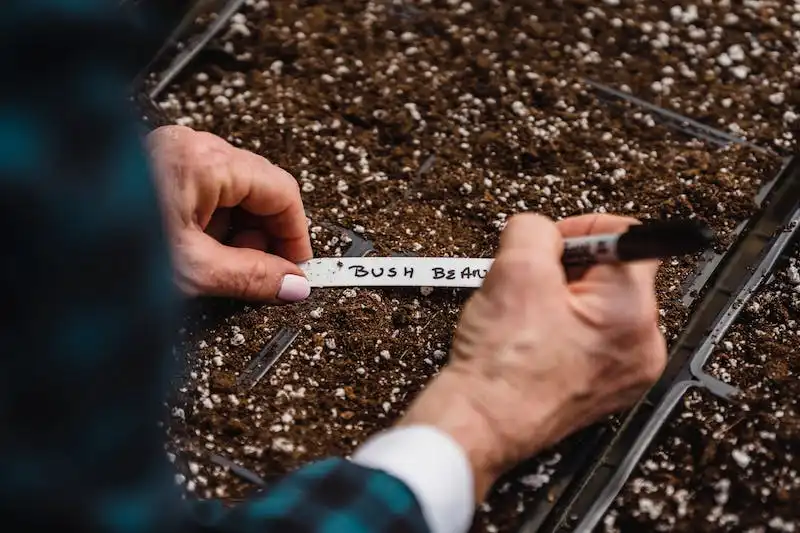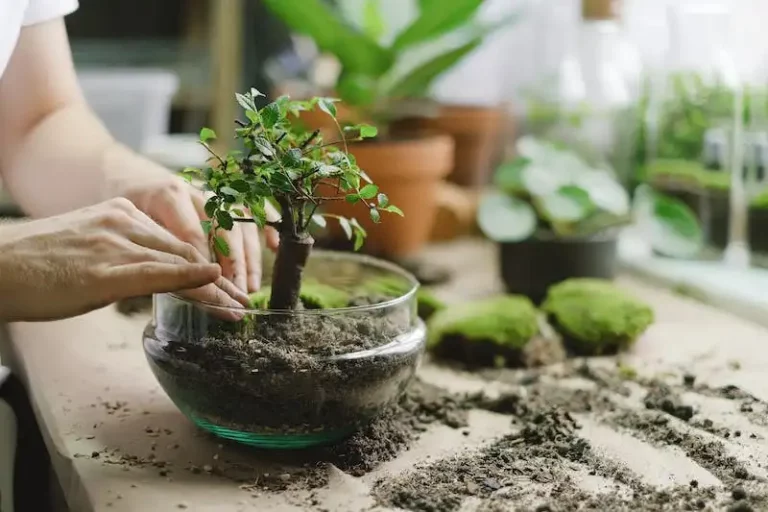Tomatoes are one of the most popular crops for home gardeners, but they are also one of the most difficult to keep healthy. One common problem that sometimes occurs when growing tomatoes is blossom-end rot. This condition is characterized by a dark, sunken spot that appears on the blossom-end (bottom) of the tomato fruit. It is caused by a lack of sufficient calcium in the fruit, which is often brought on by uneven watering or inadequate fertilization.
There are a few ways to prevent and cure blossom-end rot. First and foremost, tomato plants need consistent moisture. They should be watered regularly, and the soil should be kept evenly moist. Adding a layer of mulch around the base of the plants can help retain moisture and prevent the soil from drying out too quickly.
Secondly, it is important to fertilize tomato plants properly. A soil test can determine if there is a calcium deficiency, and if so, the appropriate amendments can be made. Calcium-rich fertilizers can be applied to the soil before planting, as well as throughout the growing season. Additionally, adding crushed eggshells to the planting hole can provide an extra source of calcium.
Lastly, it is important to monitor the plants for any signs of blossom-end rot. The symptoms typically appear early in the fruit’s development, so it is important to catch them before they become more severe. If blossom-end rot does occur, affected fruits should be removed from the plant to prevent the spread of the disease. A calendar can be kept to track watering and fertilization schedules, as well as any other management practices that may be affecting the plants.
In conclusion, blossom-end rot is a common problem that can occur when growing tomatoes. However, with proper care and attention to watering and fertilizing, this condition can be prevented. By following a few simple steps, gardeners can enjoy healthy and abundant tomato plants all season long.
4 Easy Ways to Prevent the Tomato Rot That Could Ruin Your Harvest
If you’re an avid gardener, you know that there are few things more disappointing than watching your hard work go to waste. One common problem that many gardeners face is blossom-end rot on tomatoes, which can ruin a significant portion of your harvest. Fortunately, there are several easy ways to prevent this condition and ensure your tomato plants stay healthy and productive.
- 1. Proper Watering: Blossom-end rot is often caused by inconsistent watering. It’s important to water your tomato plants regularly and deeply to keep the soil moisture levels stable. Avoid overwatering, as this can lead to waterlogged soils, but also make sure not to let the plants dry out completely. Using a soaker hose or drip irrigation system can help ensure that the plants receive a steady supply of water.
- 2. Adequate Fertilization: Providing sufficient nutrients to your tomato plants is crucial for their overall health and development. Blossom-end rot can be caused by a calcium deficiency in the soil. Fertilize your plants with a balanced tomato fertilizer that is high in calcium. Be sure to follow the instructions on the fertilizer package for proper application.
- 3. Mulching: Mulching around the base of your tomato plants can help regulate soil temperature and moisture levels. This can reduce the fluctuating conditions that can contribute to blossom-end rot. Use organic mulch, such as straw or wood chips, and apply a layer of around 2 to 3 inches thick. Make sure to leave space around the stem of the plant to prevent it from becoming waterlogged.
- 4. Proper Plant Management: Take good care of your tomato plants throughout the growing season. Regularly inspect the leaves and remove any diseased or damaged foliage. Prune the plants to improve air circulation and reduce the risk of disease. Support the plants with stakes or cages to keep the fruits off the ground and prevent them from resting on damp soil.
By following these four easy steps, you can greatly reduce the risk of blossom-end rot on your tomato plants and enjoy a healthy and bountiful harvest. Remember to stay vigilant and address any potential issues before they become more difficult to manage. With proper care and attention, your tomatoes will thrive and provide you with delicious fruits all season long.
What causes blossom end rot
Blossom end rot is a common problem that many tomato gardeners face. It is characterized by black or brown spots that develop at the blossom end of the fruit, which is the part opposite the stem. This condition can ruin your tomatoes and cause frustration for gardeners. But what exactly causes this troublesome issue?
One of the main causes of blossom end rot is a lack of calcium in the developing fruit. Calcium is essential for proper cell wall development, and when there is not enough of it, the cells break down and the fruit becomes damaged. This can happen when the plant is not able to absorb enough calcium from the soil.
There are several factors that contribute to a calcium deficiency. One of the most common causes is irregular watering. Tomato plants need consistent moisture, as fluctuations in soil moisture levels can make it difficult for the plant to take up calcium. Shallow watering, where only the top layer of soil is wetted, can also contribute to the problem.
Waterlogged soils can also prevent the uptake and translocation of calcium, as the roots may not be able to properly function in waterlogged conditions. If you dig into the soil around your plants, you may see poor root growth or even roots that have died off.
Aside from water-related issues, another possible cause of blossom end rot is an imbalance of other nutrients in the soil. Too much nitrogen, potassium, or ammonium can interfere with calcium uptake, leading to the development of blossom end rot.
It’s important to note that blossom end rot is not caused by a disease or pest. It is a physiological disorder that can occur in anyone’s garden. However, there are steps you can take to prevent and manage blossom end rot, such as testing and adjusting your soil’s pH and nutrient levels before planting, ensuring that your plants receive sufficient water, and mulching around the base of the plants to help maintain consistent soil moisture.
Gardeners in areas known for blossom end rot may also use foliar sprays or calcium-rich fertilizers to supplement calcium levels. Michigan State University (MSU) Extension recommends using a calcium chloride spray or a calcium nitrate spray, applied every 10 to 14 days, starting when the first fruits are about 1/4 inch in diameter.
In conclusion, blossom end rot can be a frustrating condition for tomato gardeners, but by taking proactive measures and addressing the causes of the problem, you can reduce the risk and ensure a successful harvest.
How to Prevent Blossom End Rot
Preventing blossom end rot can be a difficult task for many gardeners, but it is essential to keep this common problem under control. By following some easy steps, you can reduce the risk of blossom end rot and ensure healthy tomato plants.
One of the main causes of blossom end rot is a lack of calcium in the soil. Adding calcium to the soil before planting can help prevent this condition. However, it is also important to note that other factors, such as uneven watering, can contribute to the development of blossom end rot.
To prevent blossom end rot, make sure to water your plants consistently and evenly. Avoid over-watering or under-watering, as both can cause problems. Additionally, mulching around the base of your plants can help retain moisture in the soil and prevent fluctuations in moisture levels.
Another way to prevent blossom end rot is by monitoring the nitrogen levels in your soil. Excessive nitrogen can interfere with the plant’s ability to take up calcium, leading to blossom end rot. By using a balanced fertilizer and avoiding excessive use of nitrogen-rich fertilizers, you can help prevent this condition.
It is also important to keep in mind that blossom end rot is often more likely to occur in areas with highly compacted or poorly draining soil. If your soil falls into these categories, consider improving its structure by adding organic matter or amending it with compost to promote better drainage.
In addition to these preventative measures, it is crucial to start the growing season strong. Make sure to plant your tomatoes in healthy, well-prepared soil, ensuring that they have proper nutrition and drainage from the beginning. This will give them a better chance of avoiding blossom end rot as they grow.
By following these preventive tips and closely monitoring your plants throughout the growing calendar, you can greatly reduce the risk of blossom end rot and enjoy a healthy tomato harvest.
1 Keep tomato plants well watered
One of the key factors in preventing blossom end rot in tomatoes is to keep the plants well watered. This is because blossom end rot is a condition that is often caused by fluctuating moisture levels in the soil. When the soil becomes too dry, the plant is unable to take up the calcium it needs for proper fruit development. As a result, the base of the tomato, where the blossom end is located, becomes sunken and black, ruining the fruit.
Utah State University Extension recommends watering tomato plants regularly to maintain consistent soil moisture. They suggest watering deeply and thoroughly, rather than shallow and frequently. This helps to ensure that the roots have access to sufficient water, preventing the symptoms of blossom end rot.
In addition to regular watering, gardeners should also be aware of other factors that can contribute to fluctuating moisture levels in the soil. Over-fertilizing and over-watering can both lead to excessive growth and lush foliage, which can make it difficult for the plant to uptake calcium effectively. It is important to follow recommended fertilizing guidelines and not to over-water the plants.
Another known cause of blossom end rot is calcium deficiency in the soil. Gardeners should test their soil before planting tomatoes to determine the nutrient levels and make any necessary amendments. Adding calcium-rich fertilizers or incorporating sources of organic matter, such as compost, into the soil can help to ensure that there is enough calcium available for the plants.
In summary, keeping tomato plants well watered is essential for preventing blossom end rot. Regular irrigation, avoiding over-watering and over-fertilizing, and ensuring sufficient calcium in the soil are all important factors in managing this common problem for tomato growers.
2 Add mulch around tomato plants
One effective way to prevent blossom end rot in tomatoes is by adding mulch around the base of the plants. Mulch helps to regulate soil temperature and moisture levels, which is essential for healthy tomato plant growth.
In Utah, where the weather can be hot and dry, those fluctuations in moisture can cause tomato plants to experience blossom end rot. By adding a layer of mulch around the base of the plants, you can keep the soil moisture levels more consistent, reducing the likelihood of blossom end rot.
Mulching also helps to prevent weeds from growing around the tomato plants, which can compete for nutrients and water. Additionally, the mulch helps to prevent water from splashing onto the plants during watering, which can transport soil-borne diseases that could ruin the fruits.
When mulching around tomato plants, it is important to choose the right type of mulch. Organic mulch, such as straw or wood chips, is highly recommended. Avoid using a thick layer of mulch, as this can lead to waterlogged areas and shallow root growth.
Before applying the mulch, make sure to thoroughly water the soil. This will help to ensure that the tomato plants receive sufficient moisture and nutrients.
By following a mulching calendar and regularly adding mulch around your tomato plants, you can help prevent blossom end rot and keep your tomatoes healthy and productive.




